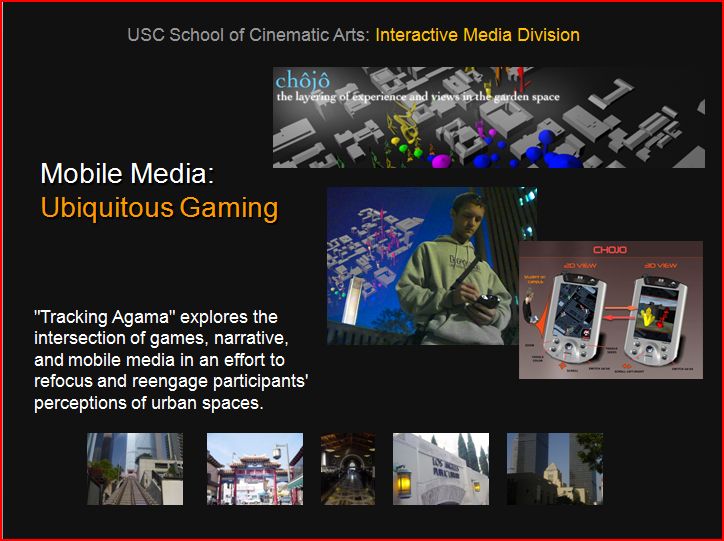Tracking Agama
STORY
Hidden within, beneath and behind the surface landmarks of Los Angeles lurks a world of mystery and imagination, of fact and fiction—a world we walk and drive past every day without seeing. Agama sought out this world. Track his journey and you may see differently too. Listen…Look…Imagine…
Tracking Agama is a game played with your cell phone that takes place in and around Downtown Los Angeles. Explore and investigate various locations, from Union Station to the Central Library, to uncover clues and unlock the keys to a mysterious narrative.
Track Agama’s path as he investigates the hidden realities of LA – through his blog, voicemail, and text messages.
Players start at Agama’s blog, a repository for his research surrounding the horror screenplay he is working on. At the blog, players learn much about Agama’s back-story, and also are introduced to a new character that prompts them to start the search for his missing friend Agama by unlocking the secrets hidden in Agama’s personal voicemail system. From there, the player is taken around downtown Los Angeles trying to solve the mystery of Agama’s disappearance.
- The technical system for tracking agama relies chiefly on two major components, a java based mail server, and a voice-enabled server application written in vxml (VoiceXML). The java mail server, James, is responsible for the text messaging aspects of the game, receiving incoming SMS messages, and parsing them to look for specific codes the user is supposed to submit. Based on those codes, the application sends either a text message response back to the player, or, by using an Outbound mail java class developed by the provider BeVocal, makes a phone call to the user. When this phone call is answered by a player, they are handed over to the vxml system, which plays audio files, or performs text-to-speech synthesis, depending on the code they initially input.
- The second component of the system -- the Agama Notes system, which the protagonist uses as a research tool -- also relies on BeVocal and the vxml architecture. To access an AgamaNote, a player dials an 800 number. This call is received by the voice application deployment service BeVocal, which points the call to a page on the trackingagama web server. This web page is written in vxml, and performs a variety of functions, such as prompting the user to enter a code, as well as playing the pre-recorded Agama notes themselves. Since the vxml pages are simple scripts interpreted by a web browser, the system also uses a php frontend and a mysql backend to store useful information about each player, such as their phone number, the date and time they started playing, and their current location in the game.
- trackingagama.net is powered by the weblog software Movable Type 3.1 and mysql. The server itself is running apache 2.0 on Red Hat Linux 9.0.
Project Team:
- Scott Ruston
- Jen Stein
- Bradley Newman
- Will Carter
- Tripp Millican
Advisors:
- Julian Bleecker
Publications:
- Location-based Mobile Storytelling (PDF)
DESIGN DOC:
